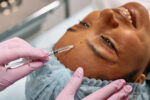Tourette Syndrome (TS) is a neurological disorder characterized by repetitive, involuntary movements and vocalizations known as tics. TS typically occurs in childhood, with the average onset between ages 5 and 7.
The condition is named after Dr. Georges Gilles de la Tourette, a French neurologist who first described the syndrome in 1885. While his initial observations laid the foundation for understanding the disorder, modern research has greatly expanded our knowledge.
Characteristics and Diagnosis
Tics are the hallmark of Tourette Syndrome and are categorized into two types: motor tics and vocal tics. Motor tics are sudden, brief, repetitive movements such as blinking or shrugging. Vocal tics include sounds like throat clearing, grunting, or repeating words.
Diagnosis typically involves the presence of multiple motor tics and at least one vocal tic, persisting for more than a year. The onset must occur before the age of 18. A neurologist often diagnoses TS through observation and medical history, rather than specific tests.
Associated Conditions
Individuals with TS often experience additional conditions, such as Attention Deficit Hyperactivity Disorder (ADHD), Obsessive-Compulsive Disorder (OCD), anxiety, and depression. These comorbidities can sometimes pose more challenges than the tics themselves.
Treatment and Management
There’s no cure for Tourette Syndrome, but treatments are available to help manage the tics. Medications, behavioral therapy, and education about the disorder are common approaches. The severity of tics often lessens with age, and some individuals may experience a significant reduction in symptoms during adolescence or early adulthood.
Support groups and educational resources are vital in assisting individuals with TS and their families. Increased public awareness and understanding are also crucial in reducing the stigma associated with the condition.
Misconceptions About Tourette’s Syndrome
- TS is more frequently diagnosed in males than females, with a ratio of about 4:1. This disparity may lead to underdiagnosis or misdiagnosis in females.
- While TS typically begins in childhood, there are rare cases where tics start in adulthood. This is atypical and often leads to diagnostic challenges.
- Some tics associated with TS are internal or less noticeable, such as abdominal tensing or throat tightening, and may not be easily recognized as tics.
- Complex vocal tics can sometimes form words or phrases that seem contextually appropriate, leading to misconceptions about their voluntary nature.
- Individuals with TS can sometimes suppress their tics for a short period, but this often leads to a rebound increase in tic frequency or intensity later.
- Tics can be influenced by external factors such as stress, anxiety, or excitement, leading to variations in their frequency and severity.
- Coprolalia, the involuntary utterance of obscenities, is a well-known but relatively rare symptom, affecting only about 10-15% of individuals with TS.
- Many people with TS have heightened sensory sensitivities, which means they may react more strongly to certain sounds, lights, or textures.
- The range and severity of co-occurring conditions, such as OCD or ADHD, vary widely among individuals with TS, making each case unique.
- Some individuals with TS exhibit remarkable creativity or talent in areas like music, art, or problem-solving, possibly linked to their unique neurological wiring.
Important Statistics
- Recent studies indicate that about 1 in 162 children are diagnosed with Tourette Syndrome in the United States. This statistic reflects diagnosed cases, suggesting a higher prevalence when including undiagnosed individuals.
- The majority of Tourette Syndrome cases manifest before the age of 11, with the average onset around 5 to 7 years. Early onset is a key factor in diagnosis and can influence the management and treatment approaches.
- For many individuals with TS, symptoms tend to peak in the early teenage years. Approximately 85% of those affected experience a significant reduction in tic severity by the time they reach their late teens or early adulthood.
- Genetic studies suggest that first-degree relatives of individuals with TS are at a significantly higher risk of developing the condition. The risk for siblings of a person with TS is estimated to be about 10 times higher than the general population.
- Over 86% of those with Tourette Syndrome are diagnosed with at least one additional mental, behavioral, or developmental condition. Common co-occurring conditions include ADHD, OCD, anxiety disorders, and learning difficulties.
Dealing With Tourette’s
When you’re in social settings, remember that open communication about your condition can foster understanding. If you feel comfortable, explain Tourette Syndrome to your peers or colleagues. This can reduce misunderstandings and build supportive relationships.
You can enhance your living and working spaces to accommodate your tics. This might include creating a quiet corner where you can retreat if your tics become overwhelming, or arranging your workspace to minimize stress and distractions.
Developing a consistent daily routine can help in managing your tics. Regular sleep patterns, balanced meals, and designated relaxation times can reduce stress and potentially lessen tic severity.
Engaging in creative activities like painting, writing, or music can be therapeutic for you. These activities not only offer an outlet for expression but also can help in managing stress and channeling your energy positively.
By educating yourself about Tourette Syndrome, you become an advocate for your own needs. This knowledge empowers you to seek appropriate care and support, and to educate others, enhancing awareness and understanding in your community.
The Role of Genetics in TS Development
While there’s evidence suggesting a strong genetic component, the exact nature and influence of these genetic factors remain unclear. Some argue that genetics play a predominant role, while others point to environmental factors or a combination of both as critical in the development of TS. This debate impacts not only our understanding of TS but also approaches to treatment and prevention.
Efficacy of Alternative Therapies
Some individuals report significant benefits from practices like acupuncture, dietary changes, or herbal supplements. However, the scientific community often demands more rigorous research to validate these claims. This debate is crucial for individuals with TS and their families as they navigate treatment options and seek the most effective methods to manage the condition.
Disclosure of TS in the Workplace
Proponents of disclosure argue that it fosters understanding and can lead to necessary accommodations. Opponents, however, worry about potential discrimination or misunderstanding. This debate reflects the broader issue of how neurological disorders are perceived and handled in the workplace.
Impact of Media Representation on TS Perception
The representation of TS in media and its impact on public perception is a debatable topic. Some argue that increased representation, even if flawed, raises awareness. Others contend that inaccurate or exaggerated portrayals perpetuate stereotypes and misunderstandings about the condition. The crux of this debate is how to balance the need for awareness with the responsibility of accurate representation.
Inclusion of TS Education in School Curricula
There’s debate over the inclusion of TS and other neurological disorders in educational curricula. Advocates believe that teaching students about these conditions promotes empathy and understanding, potentially reducing bullying and stigma. Critics, however, might argue about curriculum overcrowding or the need to focus on more general health education. This debate touches on broader issues of inclusivity and the role of education in fostering a more understanding society.
Ongoing research continues to shed light on the causes of Tourette Syndrome and potential new treatments. Studies in genetics, neuroimaging, and neuropsychology are particularly promising in offering deeper insights into the disorder.






